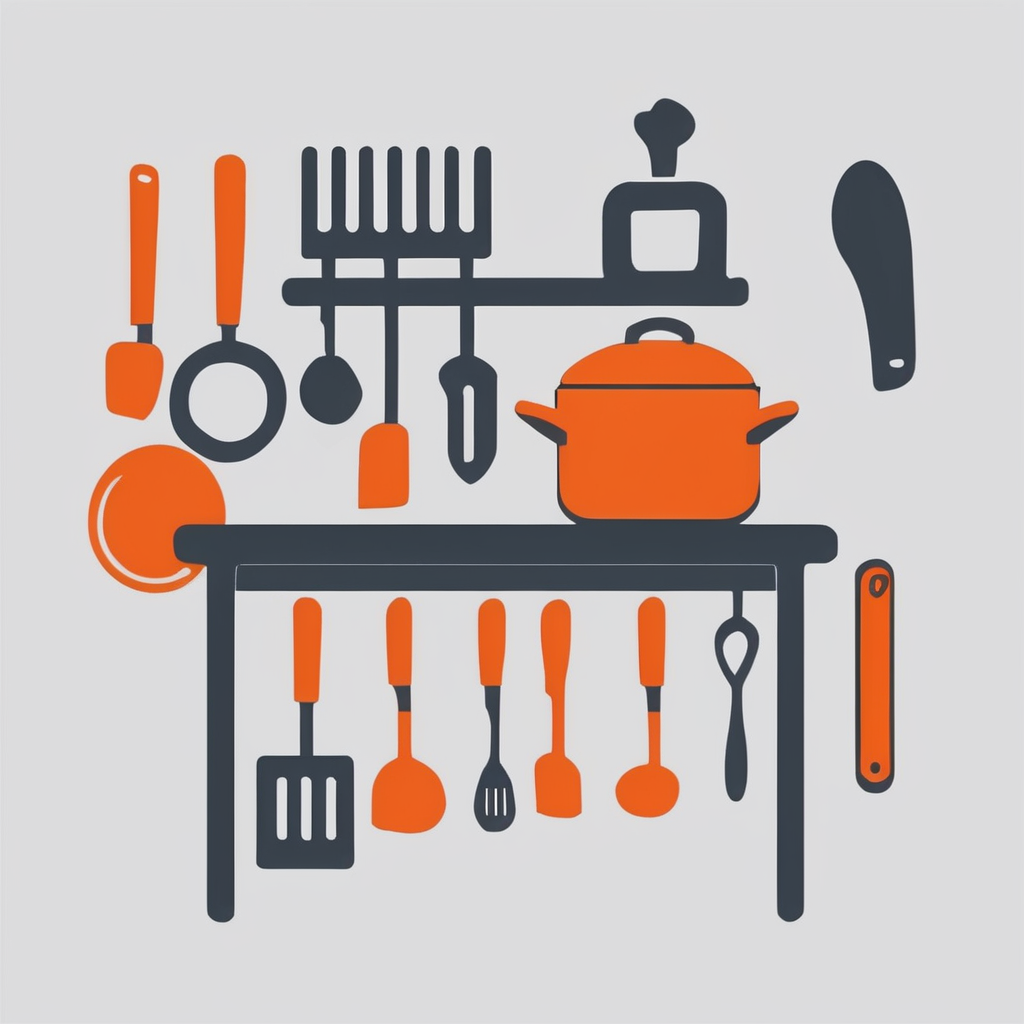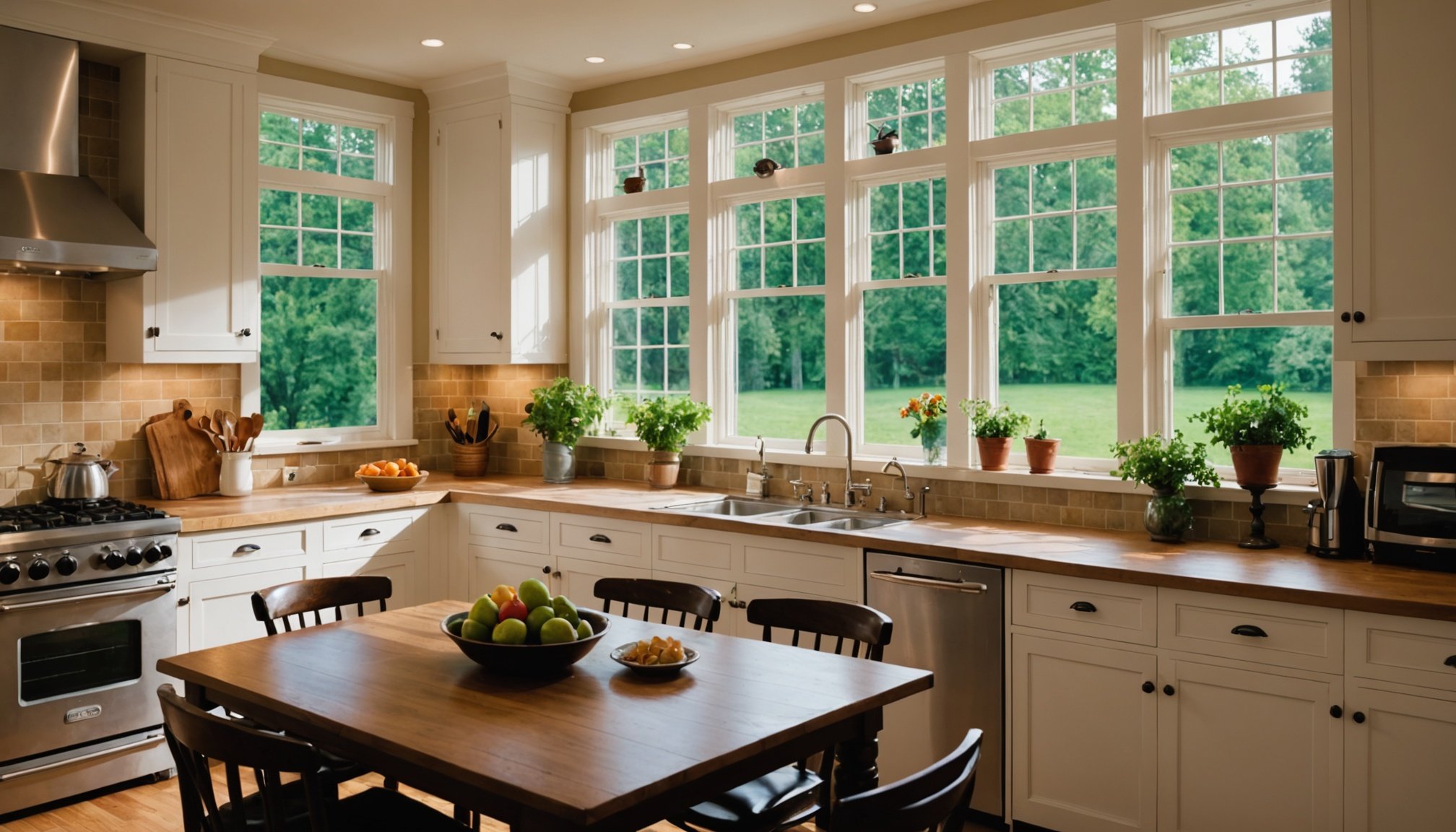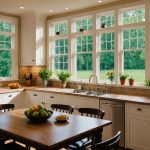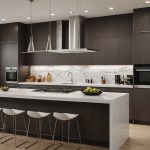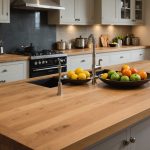The Impact of Natural Light on Dining Experience
The presence of natural light significantly enhances the dining ambiance. People often experience improved mood and increased appetite when exposed to daylight during meals. Research has shown that light exposure can influence our psychological state, which in turn affects how we enjoy our food. Studies suggest that natural light increases serotonin levels, promoting a sense of well-being, which directly impacts the dining experience positively.
Incorporating large windows into dining spaces can maximise daylight exposure. This architectural choice not only improves the mood but also elevates the setting by making the environment feel more open and welcoming. More daylight can lead to an inviting and refreshing dining space, potentially contributing to a better overall experience for guests.
Also read : Revitalize your kitchen with uplifting quotes: a fresh strategy for encouraging healthier eating choices
Furthermore, there’s growing evidence that exposure to natural light during meals can reduce stress levels. For example, a restaurant with ample daylight might encourage diners to linger longer, which can enhance social interactions and the overall enjoyment of their time. The role of natural light in subtly elevating the atmosphere supports creating a dining space that nourishes both the body and spirit through environment-centric decisions.
Views and Their Influence on Dining Habits
Exploring the intersection of views, kitchen design, and dining atmosphere, one can see how these elements together shape our eating environments. The backdrop of a meal, whether it’s a serene garden or a bustling cityscape, plays a substantial role in the way dining experiences are perceived.
Importance of Scenic Views
A captivating view can enrich the dining atmosphere, offering diners visual pleasure in addition to culinary satisfaction. Studies have shown that environments with picturesque landscapes elevate the mood, often making meals more enjoyable. For diners, the allure of a beautiful setting is as significant as the meal itself, creating a uniquely satisfying experience.
Designing for Optimal Sightlines
Incorporating views into kitchen design involves strategic planning. Efficient kitchen placements leverage natural sightlines, ensuring that views are unobstructed and integral to the dining experience. By thoughtfully arranging windows and positioning seating areas, designers can optimize how these vistas are experienced.
- Open floor plans amplify spaciousness
- Strategically placed windows maximize exposure to natural elements
- An emphasis on minimal obstructions ensures continuity
Impact of Outdoor Scenes on Dining Enjoyment
Outdoor scenes can significantly enhance dining enjoyment by fostering a connection with nature. Kitchens that integrate inspiring views provide aesthetic escapism, making them more than just a cooking space. Case studies demonstrate that homes with extensive sightlines not only add value but also significantly enhance daily living comfort.
Kitchen Layout Considerations for Window Placement
Choosing the right window placement in a kitchen layout involves balancing aesthetics and functionality. The design tips from experts suggest that optimal light and ventilation must both be considered. When positioning windows, the flow of natural light is crucial, impacting not only the brightness but also the mood of the kitchen. Optimizing window placement can illuminate workspaces, reducing the need for artificial lighting during daytime. This energy-efficient approach can enhance the overall ambiance and functionality.
Furthermore, consider aligning windows with key areas like the sink or workspace, as this can offer practical benefits. Having natural light at these points can improve visibility during routine tasks. Additionally, windows near eating or lounging areas can create a relaxing atmosphere, merging indoor comfort with outdoor views.
Experts recommend taking into account both the kitchen design and surrounding architecture. For instance, larger windows facing a scenic garden can integrate outdoor aesthetics, while smaller transoms might be suitable for more urban settings where privacy is a concern.
Remember, the right window placement in a kitchen layout can transform the space, marrying style with efficiency. Consult with a kitchen designer for personalized design tips that align with your lifestyle and home environment.
Psychological Effects of Window Placement
Understanding the psychological impact of window placement can significantly improve diverse environments, from dining spaces to living areas. Window designs play a crucial role in influencing mood enhancement and dining habits. This connection between space and well-being is paramount.
The Connection Between Space and Well-Being
Space design impacts comfort and can elevate a person’s well-being. When windows allow natural light and serene views, they foster a positive atmosphere. This openness and connectivity to the surrounding environment have been shown to boost mood and enhance overall satisfaction.
Window Designs that Promote Comfort
Certain window designs, such as expansive panes or strategic placements, promote a sense of comfort and relaxation. These designs make spaces feel more open and provide a visual connection to the outside world, which can lead to psychological benefits, including stress reduction and mood enhancement.
Research Findings on Environment and Meal Enjoyment
Studies have illustrated that dining satisfaction is closely linked to the environmental design of spaces. By integrating windows that offer valuable natural insights and light, environments become more inviting. The presence of natural elements through window views can lead to increased meal enjoyment and a positive dining experience overall. Such insights underline the importance of thoughtfully considering window placement in both residential and commercial settings to enhance daily experiences.
Practical Tips for Optimizing Kitchen Windows
Optimizing your kitchen windows can enhance both functionality and aesthetics. Light is crucial in a kitchen, and selecting the right window treatments plays a significant role. Opt for sheer, lightweight fabric curtains or blinds that allow natural light without compromising privacy. This approach ensures your kitchen remains bright and inviting throughout the day.
Positioning your windows strategically can improve airflow, essential for maintaining a fresh and pleasant kitchen environment. Consider placing windows opposite or adjacent to doors to create cross-ventilation. This helps in reducing moisture build-up and keeps cooking odours at bay.
Incorporating innovative designs and technology can further enhance your kitchen window optimization. For instance, energy-efficient glazing and smart window systems can regulate temperature, reducing energy costs. These technologies allow you to control natural lighting and airflow without manual intervention, adding convenience to your daily routine.
Design enhancements like awning windows or operable skylights can also be integrated. Such features amplify ventilation while adding a unique touch to your kitchen decor. By employing these practical tips and recommendations, your kitchen windows can be transformed into a more efficient and enjoyable element of your home.
